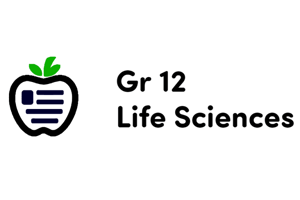Podcast
Questions and Answers
What are the components of a reflex arc?
What are the components of a reflex arc?
Receptor, sensory neuron, motor neuron, effector
Name two glands involved in regulating homeostasis through hormone secretion.
Name two glands involved in regulating homeostasis through hormone secretion.
Pituitary, pancreas
How do hormones differ from nervous system signals in terms of speed and duration?
How do hormones differ from nervous system signals in terms of speed and duration?
Hormones are slower but longer-lasting compared to nervous system signals.
What are some mechanisms the body uses to regulate short-term changes in body temperature?
What are some mechanisms the body uses to regulate short-term changes in body temperature?
How do vaccines provide immunity against infections?
How do vaccines provide immunity against infections?
What is the goal of community immunization programs?
What is the goal of community immunization programs?
What is homeostasis?
What is homeostasis?
Describe the role of the nervous system in maintaining homeostasis.
Describe the role of the nervous system in maintaining homeostasis.
Which part of the brain is responsible for controlling temperature?
Which part of the brain is responsible for controlling temperature?
What are the basic units of the nervous system?
What are the basic units of the nervous system?
What are neurotransmitters?
What are neurotransmitters?
Define spinal reflexes.
Define spinal reflexes.
Flashcards are hidden until you start studying
Study Notes
Homeostasis and the Nervous System
- Homeostasis is the body's ability to maintain a stable internal environment despite external changes, involving a continuous process of monitoring and adjusting various physiological parameters.
- The nervous system plays a crucial role in maintaining homeostasis by rapidly coordinating body functions through reflex arcs, consisting of a receptor, sensory neuron, motor neuron, and effector.
Reflex Arc
- A reflex arc consists of a receptor, sensory neuron, motor neuron, and effector, which work together to respond to stimuli and maintain homeostasis.
The Endocrine System
- The endocrine system contributes to homeostasis by regulating internal processes through the secretion of hormones from key glands, including the pituitary, pancreas, adrenal glands, testes, and ovaries.
- Hormones travel through the bloodstream to target cells, eliciting responses that are generally slower but longer-lasting compared to nervous system signals.
Regulation of Body Temperature
- Short-term changes in body temperature are regulated by mechanisms like sweating (to cool the body) and shivering (to generate heat).
Pathogens and the Immune System
- Pathogens are organisms that can cause diseases, transmitted through direct and indirect contact.
- The immune system protects the body from pathogens through physical and chemical barriers, white blood cells, and specialized immune responses involving antibodies and memory cells.
- Antibiotics are used to treat bacterial infections, but their overuse can lead to antibiotic resistance.
Vaccines and Immunization
- Vaccines provide artificial immunity by stimulating the immune system to produce memory cells, preventing or reducing the severity of infections.
- Community immunization programs aim to achieve herd immunity, where a sufficient proportion of the population is vaccinated to prevent disease spread.
- Maintaining immunization programs is crucial for public health by preventing outbreaks and reducing the burden of infectious diseases.
Brain Structure and Function
- The brain consists of the cerebrum (responsible for thinking and voluntary movements), cerebellum (for coordination and balance), hypothalamus (controls temperature), and brainstem (regulates essential activities like breathing).
- Neurons are the basic units of the nervous system, comprising structures like the cell body, dendrites, axon, and myelin sheaths.
Neurotransmitters and Synapses
- Neurotransmitters are chemical messengers that transmit signals across synapses between neurons, essential for coordinating bodily functions.
- Different types of neurons, such as sensory, motor, and relay neurons, have specific functions in transmitting signals within the nervous system.
Spinal Reflexes
- Spinal reflexes are rapid, involuntary responses to stimuli that protect the body from harm or maintain homeostasis.
Studying That Suits You
Use AI to generate personalized quizzes and flashcards to suit your learning preferences.




